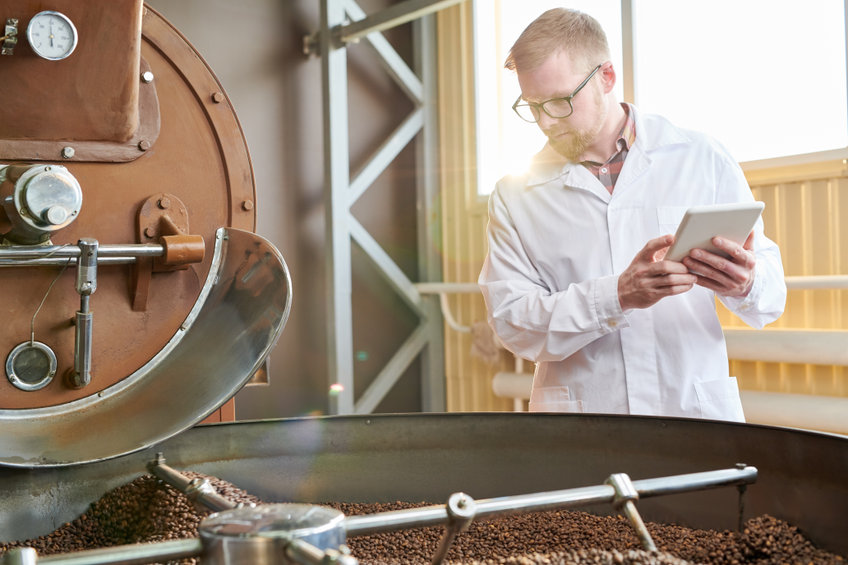Focusing on quality assurance is critical in any industry. To deliver quality and safe products is paramount especially in the food and beverage industries. You read article after article of failures by small, medium and large companies alike, unfortunately. All compromising their company’s brand reputation and customer relationships. The part that is confusing for me is there are ways to stay on top of this that really aren’t that complicated.
9 steps to quality assurance.
Let’s be real. Quality assurance is an ongoing effort and not a one-time activity. It needs to be adhered to daily to achieve the desired outcomes on an ongoing basis. Essential quality assurance best practices can be used by companies of all sizes and types of operation. Here are a couple of things to think about.
1.) Expectations – A great step in successful QA is to identify your expectations and specifications.
Do you know what metrics will determine quality in your facility? These need to be defined and agreed upon.
2.) Costs – What are the costs of poor quality? What are the costs of good quality? These could include:
- Internal and external failure’s costs?
- Appraisal and prevention costs?
Once these are agreed upon a plan can be made to help reduce costs of quality without compromise. Based on real information not just gut feelings.
In addition to cost considerations, food and beverage companies must proactively establish a baseline to address the quality and safety of their products. This should encompass quality metrics, identified risks, and strategies for addressing those risks.
3.) Metrics – Quality metrics should be identified.
Typically from customer requirements, industry certifications and regulations.
4.) Risks – Site-specific. Also those that are associated with certain foods. Allergens for example.
To support a successful quality assurance program, a detailed risk assessment, analyzing potential risks across all possible areas should be had. Then they can be ranked to form an actionable plan.
Note: Potential areas to analyze could include suppliers, raw materials, crisis management, product recalls, audit management, traceability, allergens, complaints, sanitation, and microbial control and others.
5.) A Plan – Identify CQP’s, use HACCP methodology and mirror SQF food quality plans to get started.
QA plan strategies should be designed to address the highest-level risks proactively. Their purpose is to help you control issues and achieve proactive defect prevention. Action items could include:
- Develop Quality Standard Operating Procedures (SOPs).
- Provide effective ongoing training for QA teams to satisfy quality demands.
- All policies/procedures should be thoroughly documented for compliance purposes.
6.) Execute – Not a complete plan unless executed upon.
If done correctly, clear and thorough quality expectations will emerge providing the way for an effective execution. For instance, corrective actions must be implemented for instances in which results fall out of specification.
7.) Data Collection – To improve quality performance, you must collect and analyze relevant data.
Of course, it isn’t enough to simply perform Statistical Process Control (SPC) monitoring or other forms of quality control.
Traditionally, food and beverage companies performed data collection manually. Paper-based systems and spreadsheets were used to build graphs and charts depicting QA performance. That is changing. There’s now a shift with the development of quality intelligence software. Software that provides mobile data and real-time/historical analytics, featuring dashboards and reports across every shift. Live automated data collection and ongoing visibility.
Learn more about switching from paper to
a digital data collection system and why here.
8.) Analyze – Collecting data is one thing, doing something with it is another.
While collecting data electronically is a powerful right direction QA teams must measure the relevant results. Companies can then easily identify relationships, good or bad, and can then act accordingly. Bottlenecks in production and across their supply chain for example. Seeing patterns, complaints, downtime, and overall equipment effectiveness to act upon is another. Realtime and historically.
9.) Improvement – Taking it to the next level.
Utilizing the data gathered from operations, companies can uncover inefficiencies and recurring issues. They will be able to track key metrics like product defects, waste, and corrective actions that took place for a comprehensive overview of performance. Information that can then be used to help set goals and focus priorities.
Summary
While I would love to tell you achieving a solid quality assurance plan was easy, it’s not. A processor will need to align themselves with a QA partner that understands the ongoing activities needed to achieve the goals. Goals of continually assessing, reviewing, defining quality metrics, implementing changes and measuring performance to achieve a solid quality assurance program. Coolearth should be part of this team. Let us know if you would like to know more about how Coolearth can help.




